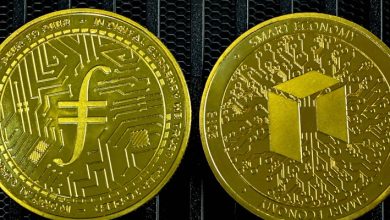Understanding Tokenomics: Key Factors for Assessing Value

- What is Tokenomics and Why is it Important?
- The Role of Supply and Demand in Token Valuation
- Token Utility: How Functionality Impacts Value
- Evaluating Token Distribution and Ownership
- The Influence of Market Dynamics on Token Price
- Emerging Trends in Tokenomics and Value Assessment
What is Tokenomics and Why is it Important?
Tokenomics refers to the economics of a token within a blockchain network. It encompasses various factors that contribute to the value and utility of a token in the ecosystem. Understanding tokenomics is crucial for investors, developers, and users alike in evaluating the potential of a project and making informed decisions.
One key aspect of tokenomics is the token’s supply mechanism. This includes details such as the total supply of tokens, the rate at which new tokens are minted or burned, and how tokens are distributed. A well-designed supply mechanism can help maintain scarcity and ensure the sustainability of the token’s value over time.
Another important factor in tokenomics is the token’s distribution model. This involves how tokens are allocated among stakeholders, including founders, investors, developers, and users. A fair and transparent distribution model is essential for building trust and fostering community participation in the project.
Additionally, tokenomics considers the token’s utility within the ecosystem. This includes its use cases, functionality, and the incentives it provides to users. Tokens with clear utility and strong network effects are more likely to gain adoption and increase in value over time.
Overall, tokenomics plays a critical role in shaping the success of a blockchain project. By evaluating key factors such as token supply, distribution, and utility, stakeholders can assess the long-term viability and potential growth of a token. It is essential to conduct thorough research and analysis of tokenomics to make informed investment decisions and contribute to the development of robust blockchain ecosystems.
The Role of Supply and Demand in Token Valuation
One of the key factors that determine the value of a token in the crypto market is the interplay between supply and demand. Supply refers to the total number of tokens available for trading, while demand represents the desire of investors to buy those tokens.
When the supply of a token is limited, and there is a high demand for it, the value of the token tends to increase. This is because scarcity creates a sense of exclusivity and perceived value among investors. On the other hand, if the supply of a token is abundant, but there is little interest from investors, the value of the token is likely to decrease.
It is essential for tokenomics analysts to closely monitor the supply and demand dynamics of a token to assess its current and potential future value accurately. By understanding how these factors influence token valuation, investors can make informed decisions about when to buy, sell, or hold onto their tokens.
In conclusion, the relationship between supply and demand plays a crucial role in determining the value of a token in the crypto market. By analyzing these factors, investors can gain valuable insights into the market trends and make strategic investment decisions.
Token Utility: How Functionality Impacts Value
One crucial aspect to consider when evaluating the value of a cryptocurrency token is its utility. The functionality of a token plays a significant role in determining its worth in the market. Tokens that have a clear purpose and offer tangible benefits are more likely to hold value over time compared to those with limited or unclear use cases.
Token utility can come in various forms, such as providing access to a platform, facilitating transactions, or representing ownership rights. Tokens that serve a practical function within a decentralized ecosystem are generally more attractive to investors and users alike. This is because they offer real-world value and can drive demand for the token in the long run.
When assessing a token’s utility, it is essential to consider factors such as the token’s scarcity, fungibility, and interoperability with other tokens and platforms. Tokens with limited supply are often more sought after, as they tend to hold their value better in the face of inflation. Additionally, tokens that can be easily exchanged for other assets or used across different platforms are more likely to be adopted on a larger scale.
Evaluating Token Distribution and Ownership
When evaluating token distribution and ownership, it is essential to consider the distribution model used by the project. A fair and transparent distribution model is crucial for ensuring that the tokens are not concentrated in the hands of a few individuals or entities. This can help prevent market manipulation and promote decentralization within the project ecosystem.
One way to assess token distribution is to look at the initial coin offering (ICO) or token sale process. Analyzing how the tokens were allocated during the sale can provide insights into the project’s commitment to fairness and inclusivity. Projects that allocate tokens in a more equitable manner are generally seen as more trustworthy and attractive to investors.
Additionally, it is important to consider the current distribution of tokens among holders. A healthy distribution of tokens means that no single entity has too much control over the project. Projects with a more decentralized ownership structure are often perceived as being more resilient and less prone to manipulation.
Furthermore, analyzing the ownership of tokens can give you a better understanding of the potential risks and rewards associated with investing in a particular project. Projects where a large percentage of tokens are held by a small number of individuals or entities may be more susceptible to price manipulation and insider trading.
In conclusion, evaluating token distribution and ownership is a critical aspect of assessing the value of a project’s tokenomics. By considering the distribution model, ICO process, current token distribution, and ownership concentration, investors can make more informed decisions about where to allocate their resources. This can help promote a healthier and more sustainable token economy in the long run.
The Influence of Market Dynamics on Token Price
The price of a token is heavily influenced by market dynamics. Factors such as supply and demand, overall market sentiment, and the level of competition can all play a role in determining the value of a token.
Supply and demand are perhaps the most significant drivers of token price. If there is a high demand for a particular token but a limited supply available, the price is likely to increase. Conversely, if there is an oversupply of tokens on the market, the price may decrease. Understanding the balance between supply and demand is crucial for assessing the potential value of a token.
Market sentiment also plays a key role in determining token price. If investors are optimistic about the future prospects of a token and the project behind it, they may be willing to pay a higher price. On the other hand, if there is negative news or uncertainty surrounding a token, its price may suffer. Keeping track of market sentiment and news developments is essential for making informed decisions about token value.
Competition within the market can also impact token price. If a token is facing stiff competition from other projects with similar features or goals, it may struggle to maintain a high price. Conversely, if a token offers unique advantages or has a strong competitive edge, it may be able to command a premium price. Understanding the competitive landscape is crucial for evaluating the long-term potential of a token.
In conclusion, market dynamics play a significant role in determining the price of a token. By considering factors such as supply and demand, market sentiment, and competition, investors can gain valuable insights into the value of a token and make informed decisions about their investments.
Emerging Trends in Tokenomics and Value Assessment
When assessing the value of a token, it is crucial to consider the emerging trends in tokenomics that are shaping the cryptocurrency market. Tokenomics refers to the economic model behind a token, including factors such as supply, demand, utility, and governance. Understanding these key elements can help investors make informed decisions about which tokens to invest in.
One emerging trend in tokenomics is the rise of decentralized finance (DeFi) tokens. These tokens are designed to facilitate various financial services without the need for traditional intermediaries. They often offer staking, lending, and yield farming opportunities, which can generate passive income for token holders.
Another trend to consider is the increasing popularity of non-fungible tokens (NFTs). These unique digital assets are tokenized representations of real-world assets such as art, music, and collectibles. NFTs have gained significant traction in recent years, with some rare pieces selling for millions of dollars.
Additionally, the concept of tokenized securities is gaining momentum in the cryptocurrency space. Security tokens represent ownership in real-world assets such as company shares, real estate, or commodities. These tokens are subject to regulatory compliance and offer investors a way to access traditional markets using blockchain technology.
Overall, staying informed about these emerging trends in tokenomics can help investors navigate the complex world of cryptocurrency and make strategic investment decisions. By understanding the value drivers behind different tokens, investors can mitigate risk and maximize potential returns in this rapidly evolving market.




